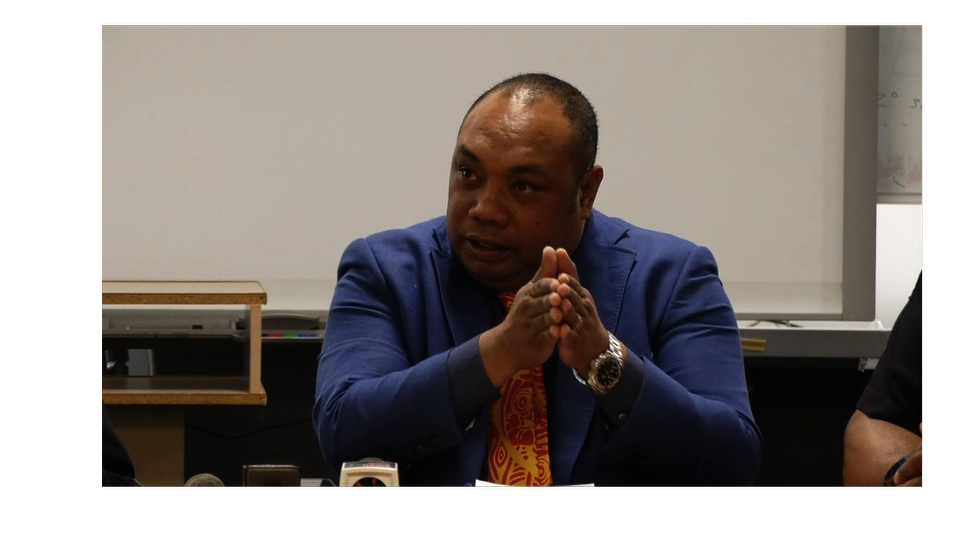|
MALARIA is among the five major causes of hospital admissions and deaths in Papua New Guinea accounting for up to 40 per cent of outpatient visits in some areas of the country and historically about 600 recorded deaths annually. Statistics from the World Health Organisation (WHO) show more than 200 million cases of malaria and 400,000 malaria related-deaths occur every year. Most of them were children and pregnant women in Africa. WHO says since 2000, malaria deaths have fallen by more than half and it has succeeded in eliminating it in many parts of the world. Forty countries have been certified as malaria-free, most recently China, which reported 30 million cases a year in the 1940s. Malaria is a life-threatening disease transmitted by the bite of an infected mosquito. Almost 90 per cent of all malaria cases in the Pacific region are found in PNG. On average, each year, the Health Department records over 1.7 million clinical malaria cases through its national health information system (NHIS).
Malaria clinical cases were reduced from about 1.6 million clinical cases in 2005 to about 990,000 cases in 2013. Malaria deaths were reduced from 724 in 2005 to 203 in 2014. That was historical. This was due to the large-scale introduction of long lasting insecticidal nets (LLINs) in 2006 and rapid diagnostic tests (RDTs) and artemether lumefantrine (mala-1) as a first line treatment for malaria in 2011. Then, the historical achievement of the PNG national malaria control programme, suffered a major setback. And we ask what went wrong. The PNG malaria indicator survey 2016-2017 report by the PNG Institute of Medical Research points to three factors: “a decline in global fund support” after 2013; “a simultaneous decline in PNG public expenditure in the health sector” and “a decrease in the availability of artemisinin-based combination treatment and RDTs across PNG, including extended stock-outs in many places.” The earlier drastic reduction in malaria was held up as a PNG success story, as indeed it was. The reversal raises some very serious questions. The reduction in health funding and the rise in drug stock-outs is not something that has just happened to PNG because of a fall in resource prices. By greatly scaling up funds for MPs to spend on various projects, the Government had reduced funds for critical expenditures, funds that could have been used for malaria prevention and treatment. Results from surveys conducted by the PNG Institute of Medical Research saw the longer-term goal of malaria elimination from PNG by 2030 is less likely now. The current resurgence in malaria is likely to worsen unless malaria control is re-intensified without delay, inclusive of the provision of sufficient funding for vector control, diagnosis, treatment, behaviour change campaigns and operational research. Those responsible for the mishap in procurement of drugs should take their share of the blame and the free health policy is a contributing factor as well. To achieve a malaria-free PNG, the Government should come with a sustainable control and surveillance system and PNG will not achieve this on its own. PNG needs its partners to make the fight against malaria a development priority. It would cost a lot of money to eliminate malaria for the short term, but it would be an investment for a healthier population in the long term. The National / PNG Health Watch Next : Little Support Given To Eye Diseases In PNG , Says Doctor Comments are closed.
|
PNG Health NewsThis websites provides all the latest Health News , insurance, health tips, health and scholarships in Papua New Guinea Top Links |
- Home
- PNG Health News
- Health Tips
- Jobs
- Health Scholarships
- Nursing Colleges in PNG
- Health Ministry
- Private Hospitals in PNG
- Health Department
- Insurance
- Institutions
- CHW Colleges in PNG
- Health Issues
- About
- Contact
- Privacy Policy
- COVID-19 in Papua New Guinea
- Enga School of Nursing
- PNG Health Database
- Hospitals in PNG
|
Home : News : Health Insurance : Training : Health Training Institutions : Hospitals : Provincial Hospitals : Contact: Privacy Policy
|

 RSS Feed
RSS Feed
